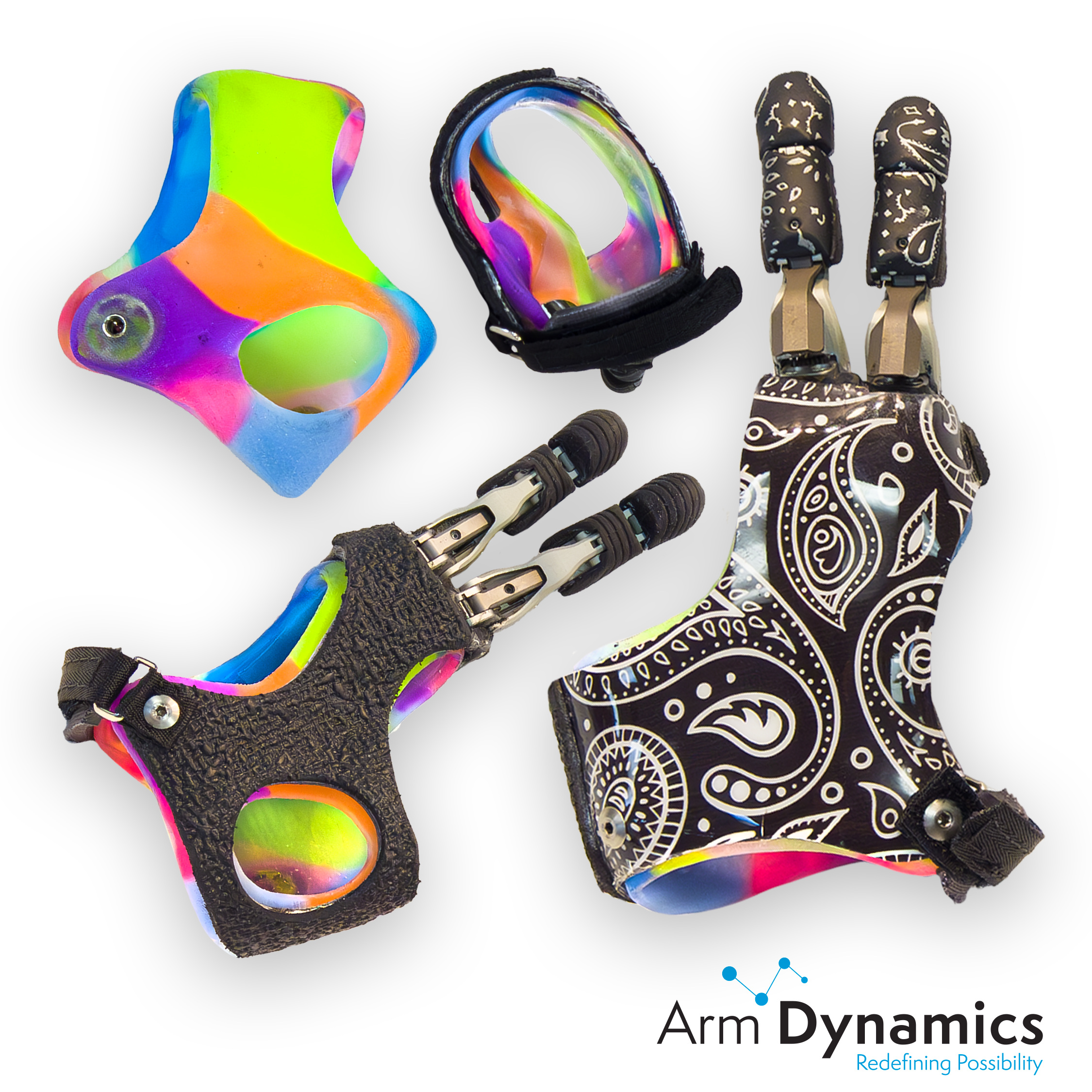About 90 percent of all upper limb amputations involve the loss of one or more digits, and/or part of the hand. For a long time, prosthetic innovations focused more on below-elbow and above-elbow devices. But in the past few years, several highly functional prosthetic components and innovative socket designs have been introduced for people with partial hand and finger loss. Below you can learn more about currently available options. You can also learn more about the unique experience of having a thumb difference in our article, "Thumb Loss."
Passive
Passive prostheses help provide function for everyday life but do not have active grasp and release. Watch Mason use hers to play the piano:
Another option is ratcheting fingers. Passive positional digits can handle rugged use and bear a lot of weight. You can learn more about them in our Patient Success Story video about Mark Betters, below:
The benefits of passive prostheses are that they are lightweight and require lower maintenance than other prosthetic options. They also provide more surface area for your hand and they protect your residual limb. When compared with other prosthetic options, though, passive devices have a limited ability to grasp objects and assist with two-handed tasks.
Naked Prosthetics also offers passive positional devices with their Grip Lock fingers. You can see an image and a video featuring them below:
Silicone Restoration
All silicone restoration prostheses are also passive. Learn more about passive silicone restorations and how we can match them to any skin tone.
Body-Powered
There are three types of body-powered prostheses for partial hand amputees: joint-driven, cable-controlled and wrist-driven. These devices are durable, and because they’re activated by the user’s wrist or residual hand, the movement and control of the prosthesis feels natural. Naked Prosthetics is an option for people who like a clean, bionic look. Check it out:
Body-powered devices are a durable and lower maintenance option. They can restore digit length, allowing patients to type, play instruments or engage in other everyday activities. Restoring digit length improves overall grasp for the entire hand. Body-powered fingers have a mechanical appearance and offer less grip strength than some other prosthetic options.
Myoelectric
Electrically powered fingers have tiny, battery-powered motors inside each finger to create motion. Electrodes placed inside the socket detect muscle contractions in the remaining portion of the hand. The electrodes then activate the motors in the prosthesis to achieve the desired finger movements.
Myoelectric fingers can be a great option for people with partial hand amputations, like Alex Krueger, whose hand had to be amputated through the palm. In this video, you can see Alex's first visit to a grocery store with his new i-digits.
Candice Dicke was born with a partial hand and didn’t wear a prosthesis as a child, but once she learned that myoelectric options were becoming available, she wanted to check them out. Candice has found them very helpful at work!
But a myoelectric device can also be used by those who still have their thumb or some of their fingers such as Ridwan.
Myoelectric devices offer the patient more natural control and active motion. Because they amplify the signals sent by the brain to the hand, they offer a range of grip strengths. Myoelectric devices have a battery pack that makes them heavier and requires charging every night. They are also more delicate than other devices, so the patient must be able to avoid dirt and moisture. Because of their complex nature, repairs can be complicated and expensive.
Hybrid
Hybrid prostheses combine elements of two or more prosthetic options with the aim of improving a person’s functional ability. Since every patient’s rehabilitation goals are unique, a hybrid solution is a great way to ensure that the patient has the tools they need to regain functionality.
In the video below, you’ll meet our patient, Shane. Initially, he was convinced he needed a Naked Prosthetics device for his ring finger, but after discussing his goals, and the pros and cons, he actually went with a Point Designs digit for his ring finger, and a Naked Prosthetics device for his pinky finger. So now he has a passive device that can handle a lot of weight and works for his lifestyle, and a body-powered device for his last finger.
Activity-Specific
Activity-specific prostheses are designed for work, sports and hobbies where a residual hand or general prosthesis could be damaged or wouldn’t perform as needed. We have fit many patients with activity-specific devices to help them reach their recreational goals.
Alex loves to fish, so we wanted to make sure his amputation wasn’t going to stop him:
Activity-specific devices are often easily interchangeable with other devices. They are generally durable and need less maintenance than other prostheses. But they can be hard to obtain, depending on the patient’s insurance coverage — some insurance carriers are not willing to cover devices for outside-of-work activities.
But let us worry about that. What we want to know is: Which of the above options interests you! Please be aware that it’s important to keep an open mind when determining what device you would like. We will help guide your decision-making process and keep you updated on what your insurance carrier will cover, but it’s very helpful to have an idea of what you want.
Ready to learn more? Contact us and ask for a consultation. We’d love to give you a tour through your options, either in-person or via a telehealth meeting. Have you used any of the above devices? Tell us about your experience in the comments below.






%20President%20and%20Senior%20Clinical%20Director.jpg?width=600&height=600&name=John%20M.%20Miguelez%2c%20CP%2c%20FAAOP(D)%20President%20and%20Senior%20Clinical%20Director.jpg)










Comments (22)